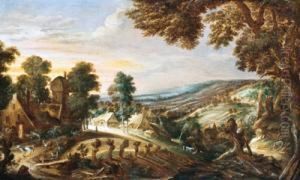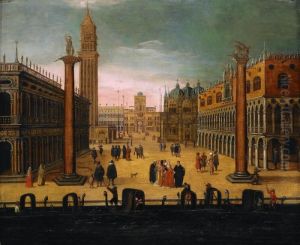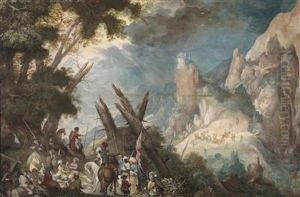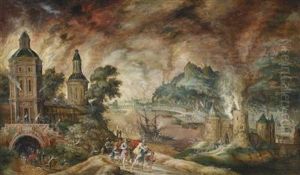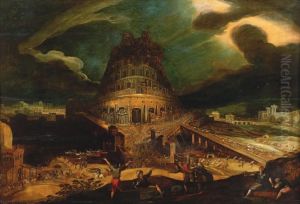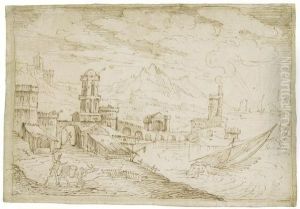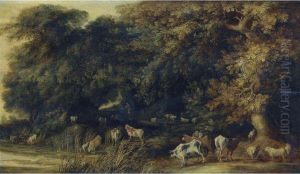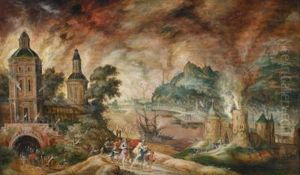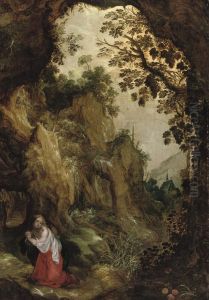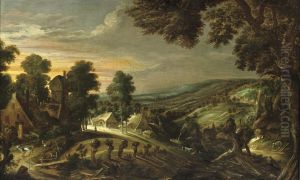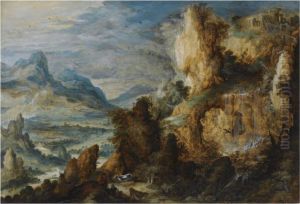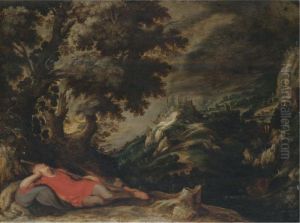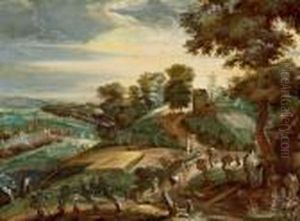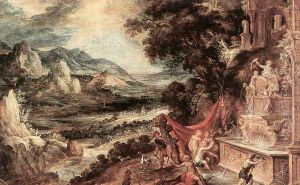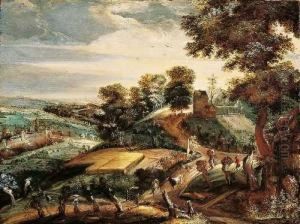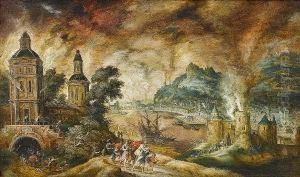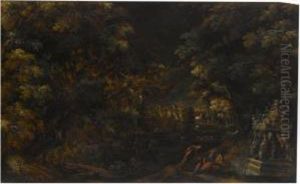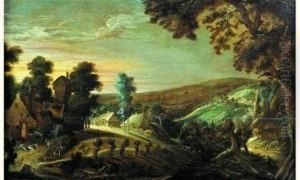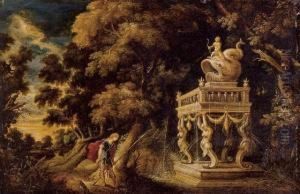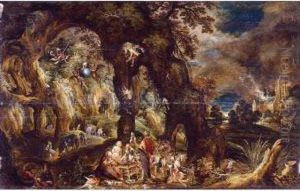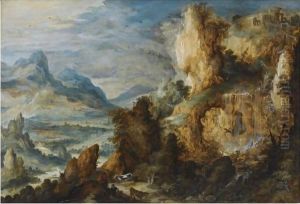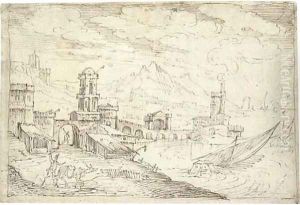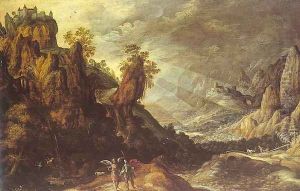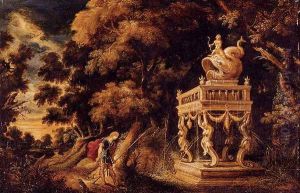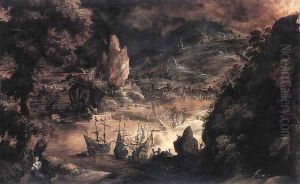Kerstiaen De Keuninck The Elder Paintings
Kerstiaen De Keuninck, also known as Kerstiaen De Keuninck the Elder to distinguish him from his nephew with the same name, was a Flemish Baroque painter specialized in landscapes and known for his dramatic portrayals of mountainous terrains. Born in 1560 in Kortrijk, in the Southern Netherlands (present-day Belgium), De Keuninck was a part of the artistic movement that flourished in the region during the late 16th and early 17th centuries.
De Keuninck initially trained in the workshop of his uncle, landscape painter Lucas de Heere in Ghent, before moving to Antwerp, which was a major artistic center at the time. In Antwerp, he became a master in the Guild of St. Luke, an institution that governed the professional affairs of artists and artisans.
Although not much is known about his life's specifics, De Keuninck's works have been well documented. His paintings are characterized by their meticulous attention to detail and often feature rocky terrains, ruins, and small figures to emphasize the grandeur of nature. He was influenced by earlier landscape painters such as Pieter Bruegel the Elder and was part of a tradition that sought to evoke both the beauty and the sublime terror of the natural world. This style of landscape painting was particularly popular among collectors and art patrons of the time.
Kerstiaen De Keuninck's work was well-received, and he became known for his unique approach to landscape composition. His paintings can be found in several museums and collections around the world. Despite his success as an artist, there is little recorded about his personal life, including his training and influences.
De Keuninck passed away in 1632. His legacy is preserved through his evocative landscapes, which continue to be studied and admired for their contribution to the Flemish Baroque tradition and their influence on subsequent generations of artists.
